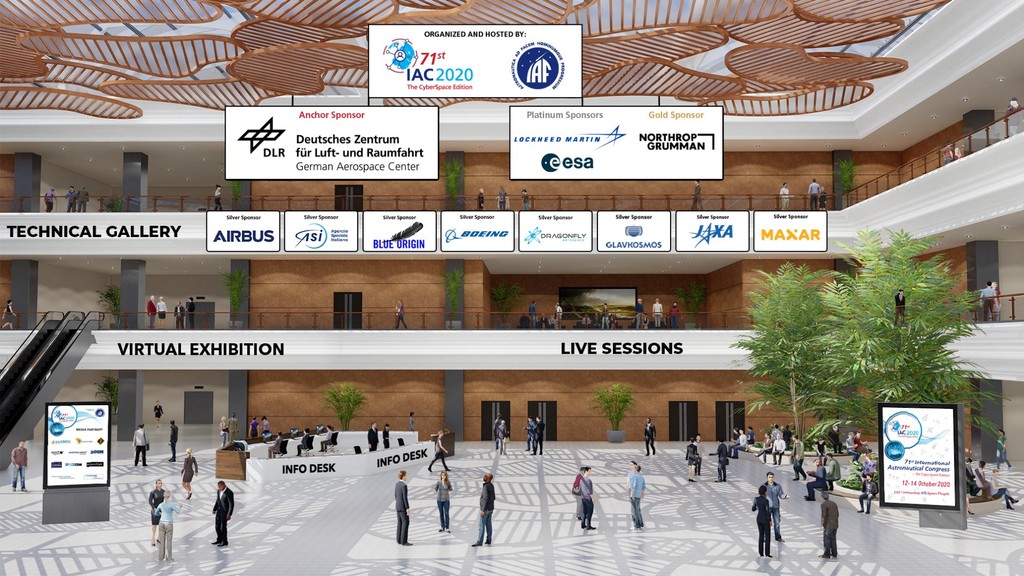In-person meetings have become a rare luxury in these complex times due to the COVID-19 pandemic. That is why the International Astronautical Federation doubled down on its declared goal of Connecting @ll Space People by bringing forth the first fully online International Astronautical Congress – and making it free to register. The 71st IAC – The CyberSpace Edition celebrated last week (12-14 October) saw more than 10,000 attendees join all over the world to share the latest developments in space-related fields. The COMPASS team could not miss this exciting event, and contributed with 5 papers and videolectures for the virtual technical gallery.
In his conference paper Marcello Scalera presented his thesis work about the analysis of a systematic approach to define the social value rating of a generic Earth remote sensing mission. The paper introduces several parameters to define the achievement of a specific service considering the existing payloads onboard of the LEO satellites. According to the number of services fulfilled, the social value rating is estimated considering as reference the Sustainable Development Goals introduced by UNOOOSA.
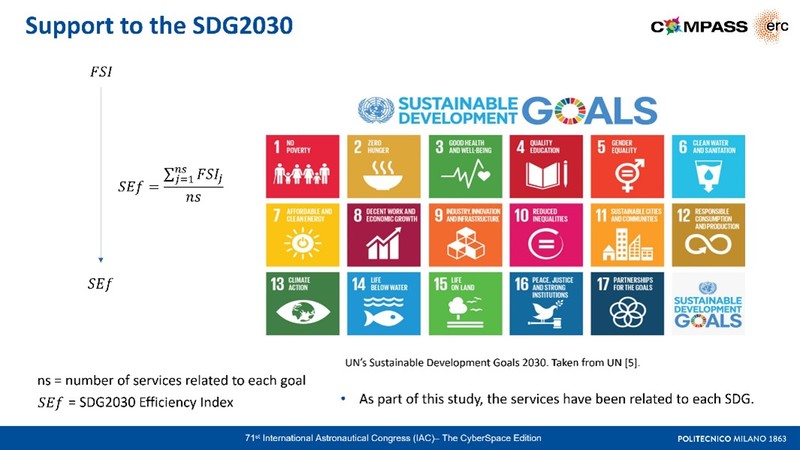
Simone Limonta presented the results of his thesis work about the modelling of the re-entry and break-up of asteroids. This type of analysis is of crucial importance to predict the consequences such events can have on the ground. The innovative aspect of Simone’s contribution is the application of a continuum-based approach to propagate the density of the fragments generated by the asteroid explosion as a continuous cloud and their reconstruction using the Starling suite developed at Politecnico di Milano. This allows for a statistically sound analysis of the impact footprint of the surviving fragments.
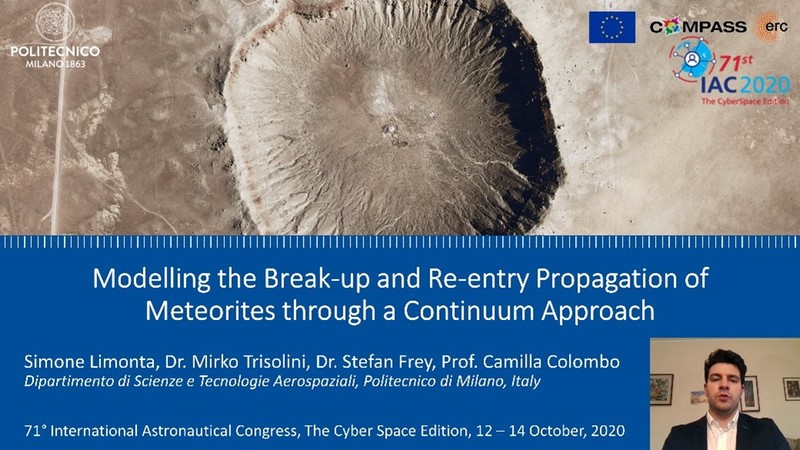
Francesca Scala talked about the results of her PhD research on the design of the geometry for a formation flying mission, mounting an L-band aperture synthesis payload. The mission concept was proposed by the European Space Agency (ESA), to foresee the use of three SMOS-like satellites, flying in a tight rigid formation in Low Earth Orbit. The selection of a proper yaw angle for the formation orientation is presented, aiming to minimise the effect of Earth oblateness perturbation, the propellant consumption, the solar panels illumination factor and the plume impingement effect. Moreover, a collision risk analysis is presented for the selected baseline, in accordance with safety policies.
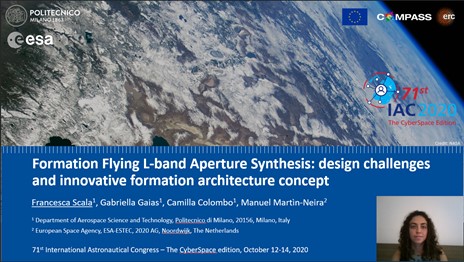
In the recent years, many large constellations have been announced to be deployed in Low Earth Orbit. The failed satellites from large constellations will pose a severe safety threat to space environment. Simeng Huang and her colleagues from Politecnico di Milano, together with D-Orbit S.p.A., performed a preliminary mission analysis of Active Debris Removal service for an OneWeb-like constellation. This work was funded by the European Space Agency Sunrise programme. Two different mission architectures with chemical propulsion were investigated: mothership and chaser. The preliminary study focused on the orbit transfer phases, which dominate the prime cost drivers of propellant budget and mission time, as well as the drag-induced de-orbiting.
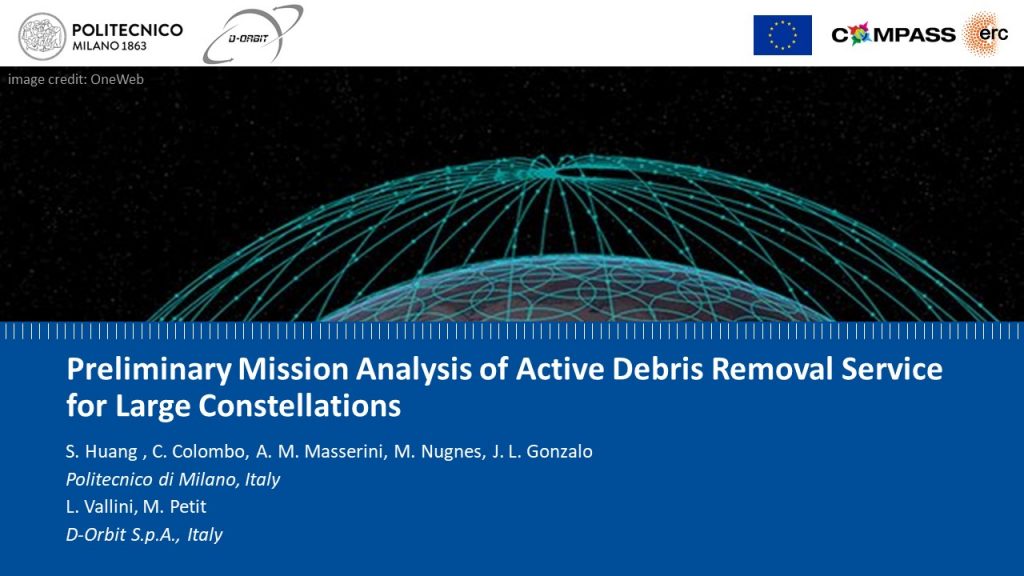
The continuous increase of objects in orbit, both operational spacecraft and debris, poses a great challenge for sustainable and safe operations and highlights the need for Space Traffic Management (STM) systems. In their paper “Collision avoidance algorithms for Space Traffic Management applications”, Juan Luis Gonzalo and Camilla Colombo reviewed the latest advances from the COMPASS group in close approach analysis and collision avoidance manoeuvre modelling, discussing their potential application to future STM systems and their synergies with on-board autonomy and artificial intelligence.
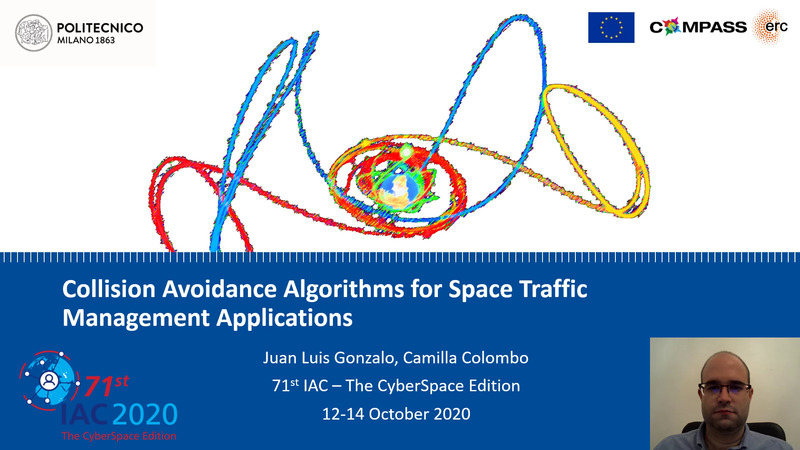
The 71st IAC has certainly risen to the challenge and been a memorable event, but we cannot wait to meet you all in person again soon!

